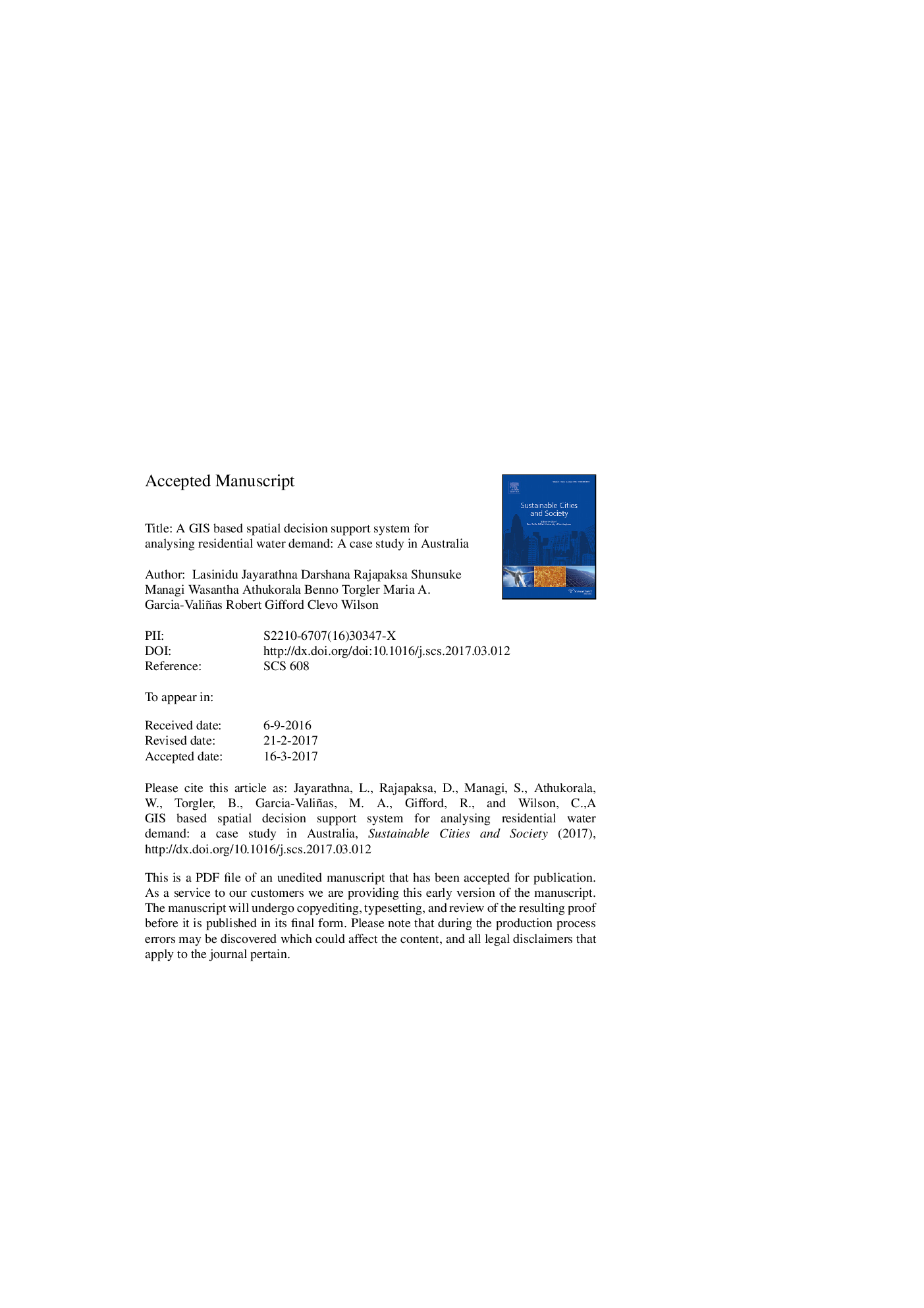| Article ID | Journal | Published Year | Pages | File Type |
|---|---|---|---|---|
| 4927994 | Sustainable Cities and Society | 2017 | 26 Pages |
Abstract
Managing water resources and the need to adapt both supply and demand side policies to a changing environment has become a priority in both developed and developing countries. This research demonstrates the application of the geographic information system (GIS) in modelling residential water demand in order to develop a spatial decision support system (SDSS). Household level survey data covering 90 suburbs within the Brisbane City Council (BCC), Queensland, Australia, are used for the analysis. First, residential water demand was estimated and the most significant variables found to predict high water use at the suburban level. These variables included household size, presence of a swimming pool, income and people over 65 years of age. By integrating this model with an SDSS, a spatial decision support system for residential water demand (SDSS-RWD) is developed. By producing maps which clearly display the different factors affecting residential water demand, the benefit of the SDSS-RWD is found in its use as a policy making tool for manipulating and evaluating effective water management strategies. In particular, the flexibility of the SDSS-RWD offers in evaluating changing determinants of residential water demand creates the capacity for local government bodies to analyse a range of alternative policies.
Keywords
Related Topics
Physical Sciences and Engineering
Energy
Renewable Energy, Sustainability and the Environment
Authors
Lasinidu Jayarathna, Darshana Rajapaksa, Shunsuke Managi, Wasantha Athukorala, Benno Torgler, Maria A. Garcia-Valiñas, Robert Gifford, Clevo Wilson,
